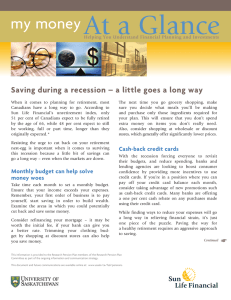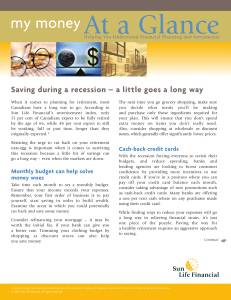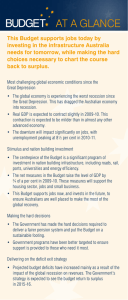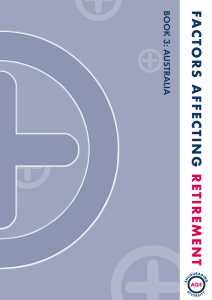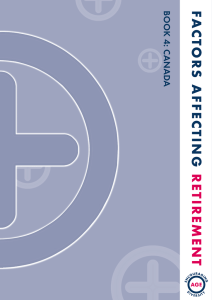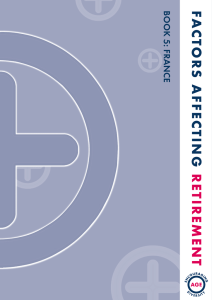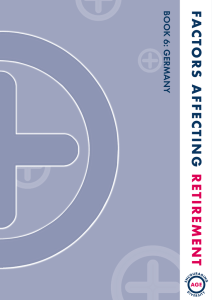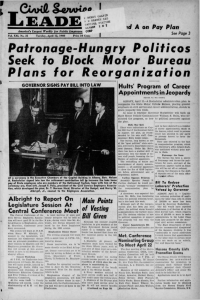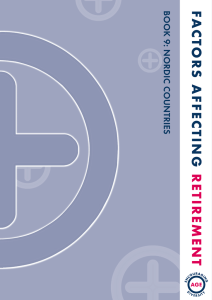At a Glance my money
advertisement
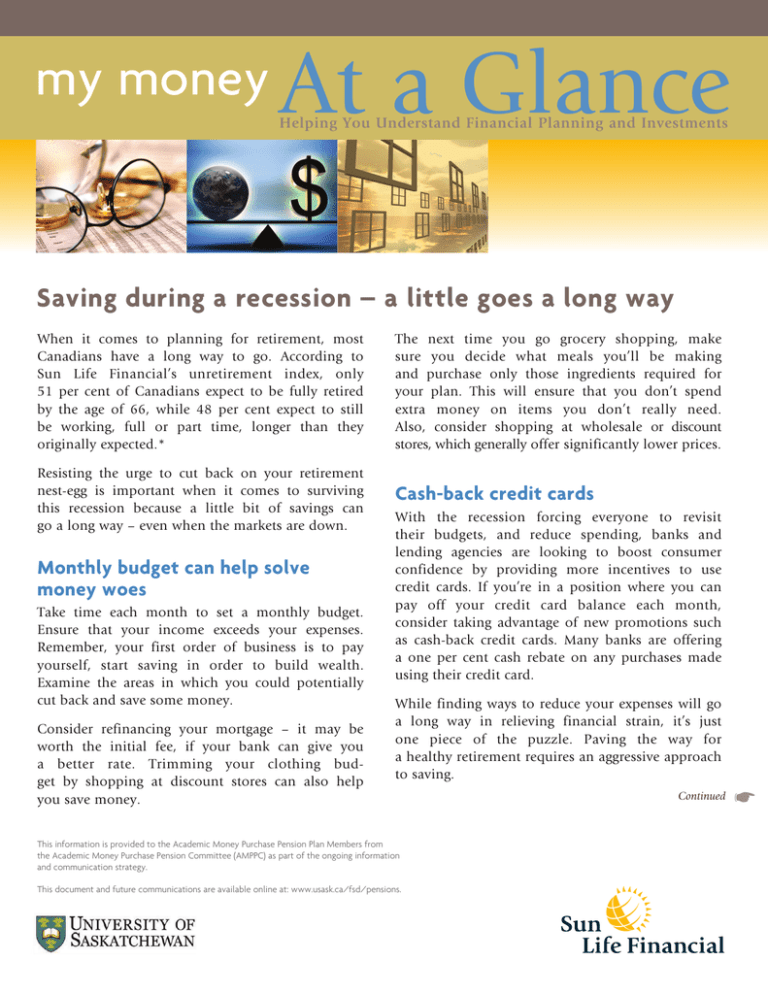
my money At a Glance Helping You Understand Financial Planning and Investments Saving during a recession – a little goes a long way When it comes to planning for retirement, most Canadians have a long way to go. According to Sun Life Financial’s unretirement index, only 51 per cent of Canadians expect to be fully retired by the age of 66, while 48 per cent expect to still be working, full or part time, longer than they originally expected.* The next time you go grocery shopping, make sure you decide what meals you’ll be making and purchase only those ingredients required for your plan. This will ensure that you don’t spend extra money on items you don’t really need. Also, consider shopping at wholesale or discount stores, which generally offer significantly lower prices. Resisting the urge to cut back on your retirement nest-egg is important when it comes to surviving this recession because a little bit of savings can go a long way – even when the markets are down. Cash-back credit cards Monthly budget can help solve money woes Take time each month to set a monthly budget. Ensure that your income exceeds your expenses. Remember, your first order of business is to pay yourself, start saving in order to build wealth. Examine the areas in which you could potentially cut back and save some money. Consider refinancing your mortgage – it may be worth the initial fee, if your bank can give you a better rate. Trimming your clothing budget by shopping at discount stores can also help you save money. With the recession forcing everyone to revisit their budgets, and reduce spending, banks and lending agencies are looking to boost consumer confidence by providing more incentives to use credit cards. If you’re in a position where you can pay off your credit card balance each month, consider taking advantage of new promotions such as cash-back credit cards. Many banks are offering a one per cent cash rebate on any purchases made using their credit card. While finding ways to reduce your expenses will go a long way in relieving financial strain, it’s just one piece of the puzzle. Paving the way for a healthy retirement requires an aggressive approach to saving. This information is provided to the Academic Money Purchase Pension Plan Members from the Academic Money Purchase Pension Committee (AMPPC) as part of the ongoing information and communication strategy. This document and future communications are available online at: www.usask.ca/fsd/pensions. Continued * Don’t leave any money on the table (cont’d) Registered savings vehicles such as RRSPs can help you save money on income tax (since they act as tax-shelters), while also providing opportunity for long-term growth, as you build a nest-egg for retirement. You’re allowed to contribute up to 18 per cent of your 2008 earned income to a maximum of $21,000 for the 2009 tax year. It’s important to maximize your monthly contribution without leaving any money on the table. If your company plan matches your own contributions, then opt to contribute to the product which your company matches. For example, if you put $100 into a certain plan and the company matches that contribution by 50 per cent, your total contribution is now $150, rather than $100. Remember, the longer your money is invested, the higher the growth potential. For example, assuming an average growth rate of 6 per cent, if you invested $500/annually for 40 years, instead of $1000/annually for 20 years, the 40-year investment would yield $118,193, compared to just $45,045 for the 20-year investment. That’s a $73,148 difference on the same $20,000 principal! Investing over long periods of time has other advantages too, such as protection from wild swings in the markets. If you regularly invest the same amount each month in your RRSP, when the markets are low, that amount will buy more units of a particular fund, increasing your growth potential. When the markets are bullish and performing well, your monthly investment will buy fewer units in that fund, but your money will be growing at a faster rate. Save more by reducing tax burden If you find yourself in the enviable position of receiving more income than before, think of it as an opportunity to put away some money. Increasing your RRSP contribution to your yearly maximum will undoubtedly help your nest-egg to grow and reduce your immediate tax-burden. If you are married or common-law, take advantage of income-splitting provisions to reduce the income tax you’ll have to pay back to the government. In 2008, the Federal government also introduced the new Tax-Free Savings Account (TFSA), allowing you to deposit up to $5,000 annually - any investment income, including capital gains is tax free. Unlike RRSPs, your withdrawals aren’t taxed, and the amount withdrawn can be put back in the following year without reducing your contribution room. *[Sources:Sunlife.ca’s economy blog (post about retirement, references Sun Life research on unretirement index) i If you have a general question or suggestion about this newsletter, please send an e-mail to grsmarcom@sunlife.com or write to my money At a Glance Newsletter, Group Retirement Services Marketing, Sun Life Financial, 225 King Street West, Toronto, ON M5V 3C5. This bulletin has been created exclusively for you. It addresses issues to help you with your financial planning and investments, and cannot be reproduced in whole or in part without the express permission of Sun Life Financial.
